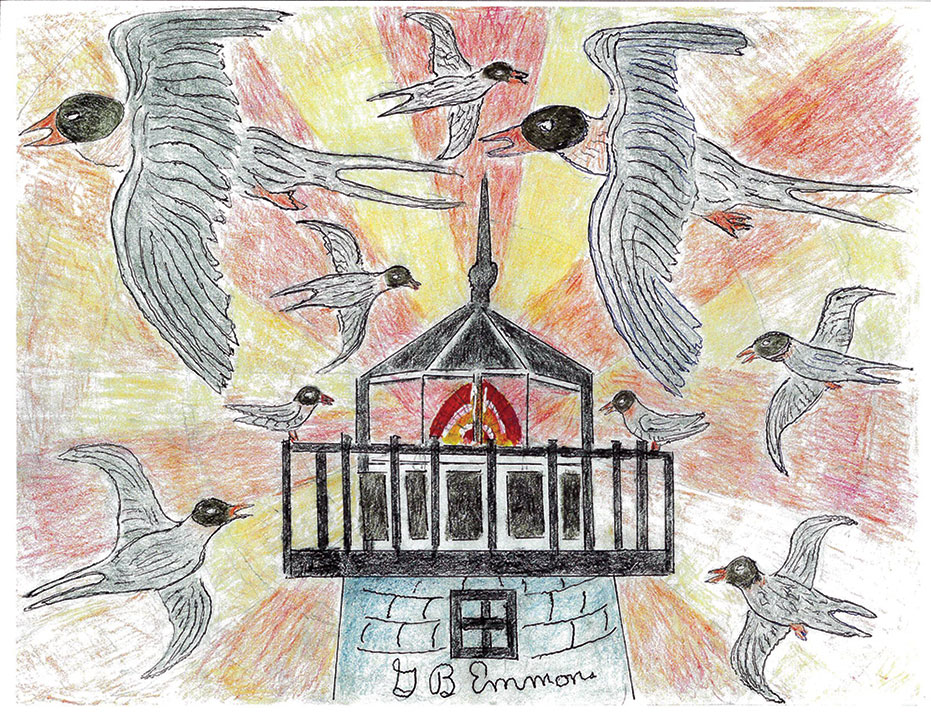At the beginning of the 18th century, the basic design of lighthouse beacons was perfected by the French inventor Augustine Fresnel.
In his research, Fresnel deducted that the power for electric light was pure energy sent out in waves through the air. He experimented with three types of light prisms to effectively focus their concentrated beams that are still in use today. They come out many times brighter and can be seen in a dark storm more than 20 miles away.
The Bird Island Lighthouse in Marion (as in my illustration) is well known for sending out this kind of a long-distance sentinel signal to migrating terns during spring as they travel along the Atlantic flyway toward a perfect, low-lying island for nesting and seasonal reproduction.
One of the endangered terns on the way is the Roseate species, saved from extinction by the town by donating and distributing hundreds of wooden nesting boxes to safely help new hatchlings survive. The terns that are saved every year just happen to comprise two-thirds of the Roseate world population.
The Fresnel lens is the largest, most expensive, single piece of equipment in the beacon area of the lighthouse, responsible to get the critical warning message along a rocky coast in a storm with flashing rays of bright light, often synchronized with blasts of a loud foghorn with a throbbing message that real trouble lies waiting just ahead. Many lighthouses today are still equipped with Fresnel lenses, while only a few have very recently been replaced by a vastly different powerful electrical combination of beams.
As well as future navigational and nautical conclusions, the combination of brilliant invention of Fresnel lenses is also coming to light for theory of modern day medical hospital clinics. Subsequently, Augustine Fresnel and his brilliance will even now still go down in history for showing modern generations a new way of thinking for the future.
By George B. Emmons
